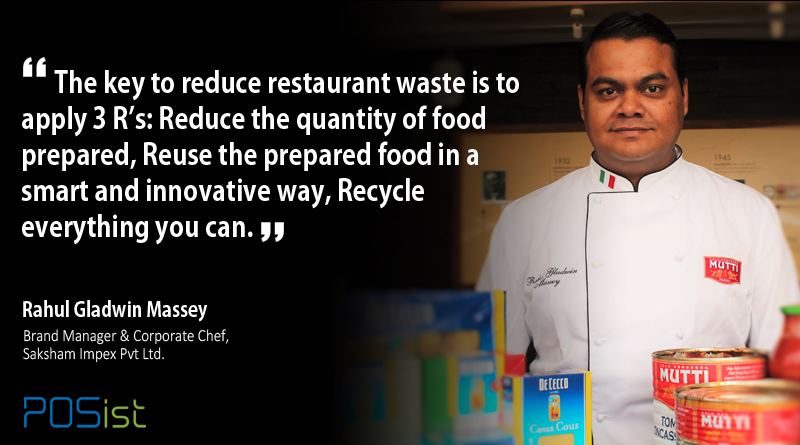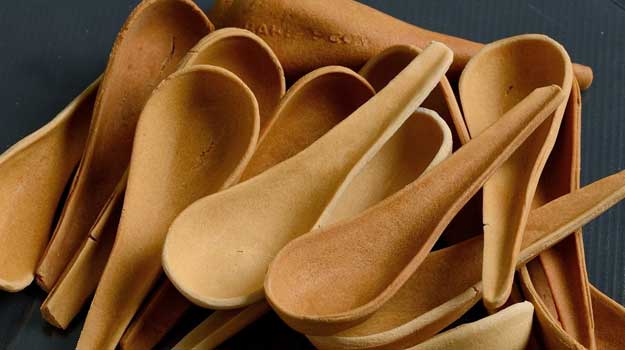Human life is full of contradictions. While on one end, masses are still trapped by the evils of poverty and hunger, restaurants around the country and the world waste tons of food every day. It is high time now for restaurants to start including smart food waste management on their priority list. According to a study, the percentage of food waste in fast-food restaurants is about 9.55 % and in restaurants with full service 11.3 % of the total amount of purchased food. Not only is this harmful for world food supplies, but for the restaurant as well in terms of inflated food costs. When your staff is producing too much food waste, it means that raw materials which could have been used elsewhere to get profits are getting wasted. So not only is the food cost rising, but profits are decreasing as well. The cost of food for the preparation of meals is the second largest expense in the restaurant industry, right after personnel costs. This is why restaurant owners need to start incorporating restaurant food waste management in their business plan itself. Find out how to reduce the food wastage in restaurants here.
Tips For Smart Food Waste Management In Restaurants
Through this article, we will try to analyze and put forward techniques and tips for food waste management in restaurants.
1. Create a Responsible Team For Managing Restaurant Waste
The first step in the process of restaurant food waste management is creating a responsible team. It is better to hire those people for this task who are already involved with cleaning and washing dishes because they have a basic idea of the quantity and the type of garbage.
It is crucial to educate and train every member of the team about the methods of reusing and recycling. If you have a larger restaurant, set up a larger team including a leader whose work will be to ensure that all the members follow the waste reduction management program.
A smaller team will work better for your restaurant food waste management if your restaurant operates on a smaller scale.
2. Conduct a Waste Audit
First of all, there is a need to find out the amount of waste and the kind of waste generated by the restaurant. Your primary goal while conducting audit should be to find out and identify the sources of these waste and then only you will be in a position to plan out ways to reduce it.
Before conducting the audit, it is essential to explain to your team why you are holding the audit and benefits of this program for the restaurant.
3. Break-up Your Waste After Identifying It
After identifying the restaurant waste, it is better to break it up into categories namely-
a) Pre-Consumer Waste- The waste that does not leave the kitchen such as rotten perishable ingredients. The solution to this waste would be to improve the storage system so that the raw materials are not wasted. For this, you will have to keep a regular check on the evaluation of inventory which will be discussed in detail in the next point. Apart from inventory evaluation and proper storage, you must also emphasize staff training.
b) Post-consumer Waste- The second kind of waste in a restaurant is the post-consumer waste. This type of wastage happens when the servers have served the food, and some or all part of it is left over by the customers. One of the major reasons for post-consumer waste is over-proportioning. Serving large quantities of food which cannot be consumed by the guests leads to wastage and also raises the Food Costs. Thus, arises the need for Portion Control. Learn how Portion Control helps in reducing wastage and controlling Food Costs here. Another cause of post-consumer waste is the poor quality of food and taste. You should ask for Customer Feedback in such cases, to identify the reason for the leftover food.
4. Evaluating Inventory
It is necessary to assess the already existing stock before going for a fresh purchase. Maximum food wastage happens when the stock is ordered in large quantities but is not consumed before its expiration. It is advisable to set re-order levels for every ingredient so that you get a reminder to place the re-order as soon as the said ingredient hits the pre-defined minimum. This way, you don’t need to over-purchase for fear of running out of Stock. These tips will help you monitor your restaurant inventory and also control food costs.
Also, it is crucial to conduct audits while receiving the Stock Items from the vendor. Check for damaged food items, and always keep track of the manufacturing date and the expiration date of each. It is a good idea to use an Inventory Management System that keeps a complete track of the stock details.
5. Donating and Recycling
In the case of over-preparation of food, instead of throwing it out, you can donate it to the poor. Connect with the local NGOs in your area that can help you donate the leftover food instead of letting it go to waste. Recycling and reusing food is difficult while still maintaining its quality and hygiene. However, in certain cases, such as Bakeries and Sweet Shops, you can sell yesterday’s item at half the price instead of letting it get wasted. However, do remember to inform your customers that you are selling a day old items as well!
Try out these smart restaurant food waste management tips in your restaurant and let us know how they worked out for you!


















